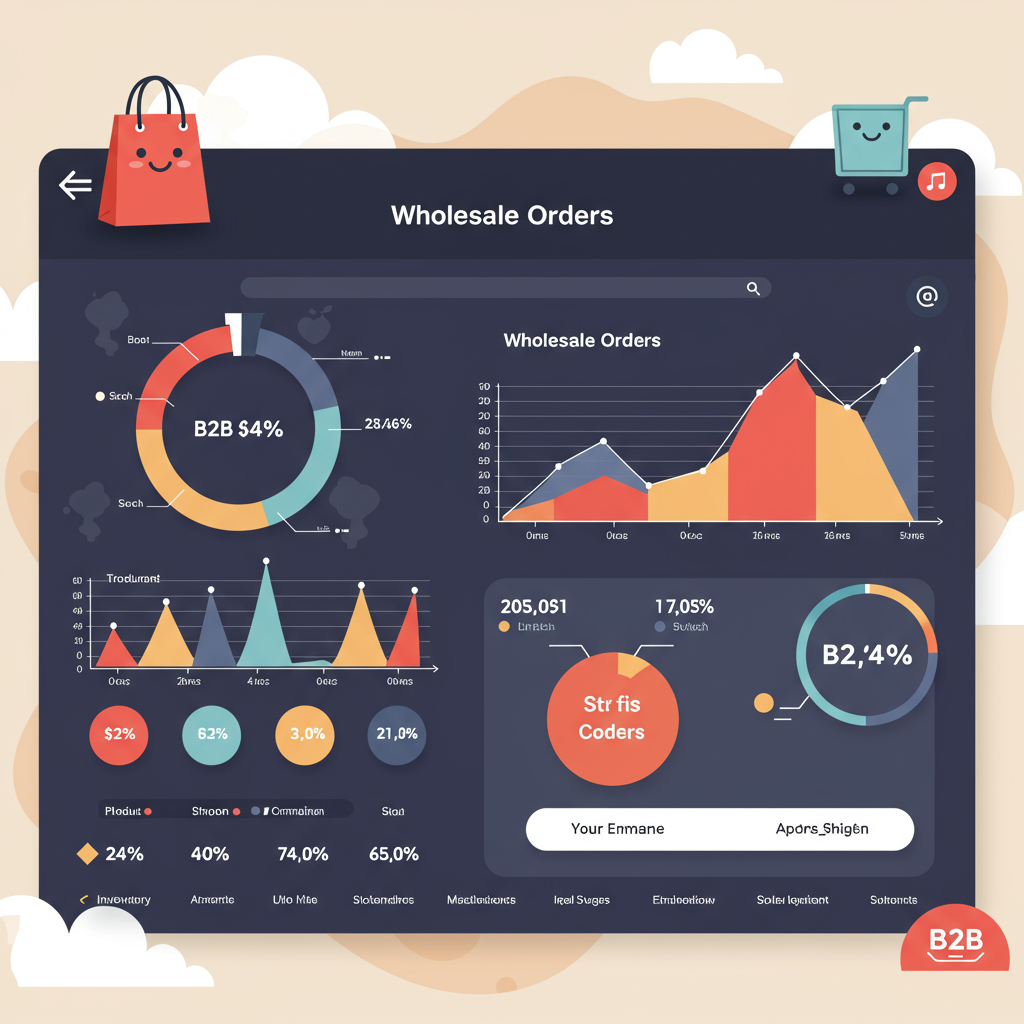Unlock new revenue streams and scale your business by effectively setting up and managing a B2B wholesale operation on Shopify.
Hello fellow merchants! Today, I want to share my insights and experiences on a topic that can significantly boost your revenue: setting up a wholesale channel on Shopify. It’s a journey I’ve navigated myself, and I’m excited to lay out the roadmap for you.
Many of us start with direct-to-consumer (DTC) sales, which is fantastic. But imagine reaching new markets, increasing order volume, and building brand awareness through other businesses. That’s the power of wholesale.
For me, the benefits were clear: larger average order values, reduced marketing costs per unit (as retailers do some of the heavy lifting), and a more diversified revenue stream. It’s about scaling your business beyond individual customer purchases.
Before diving into the ‘how,’ I always advise considering your product’s suitability for wholesale. Is there a demand from other businesses? Can you handle larger order volumes and different pricing structures?
Historically, Shopify offered a dedicated ‘Wholesale Channel’ app. While it served its purpose, it’s important to note that this app has been deprecated. Shopify has since evolved its B2B offerings, especially for Shopify Plus merchants.
So, what are your options now? I’ve identified a few primary strategies, ranging from simple to highly sophisticated, depending on your budget and needs.
The simplest method, and one I’ve seen many small businesses start with, is creating a password-protected page or collection. You can set up specific products or variants for wholesale and share the password with approved buyers.
The upside of password protection is its low cost and ease of setup. The downside? It’s not very scalable. Managing different pricing tiers, minimum order quantities (MOQs), and customer groups becomes a manual nightmare very quickly.
Another basic approach involves using unique discount codes for wholesale customers. You can create codes that apply a percentage or fixed amount discount to their entire cart, effectively giving them wholesale pricing.
Again, discount codes are simple to implement. However, they lack the sophistication for complex wholesale operations. Customers still see retail prices until they apply the code, and managing different tiers for various buyers is cumbersome.
This is where most non-Shopify Plus merchants will find their sweet spot. The Shopify App Store is brimming with excellent wholesale apps designed to transform your existing store into a B2B powerhouse.
When evaluating apps, I look for features like: customer tagging for different price lists, minimum order requirements (MOQ/MOV), tiered pricing, quick order forms, and the ability to hide retail prices from wholesale customers.
Apps like Wholesale Gorilla, Wholesale Club, or B2B/Wholesale by Bold are often highly recommended. I suggest trying out their free trials to see which one best fits your specific workflow and budget.
Once you choose an app, the general process involves installing it, configuring your wholesale customer tags, setting up price lists for these tags, and then inviting or approving wholesale accounts.
A crucial aspect is the customer approval process. Most apps allow you to review new wholesale registrations before granting them access to your special pricing. This helps maintain control over your distribution.
If you’re on Shopify Plus, you have access to Shopify’s native B2B capabilities, which are incredibly robust and integrated directly into your admin. This is the most powerful solution for large-scale wholesale.
With Shopify Plus B2B, you can create company profiles, assign multiple contacts to a company, set specific price lists per company, manage payment terms, and even allow customers to pay by purchase order.
Implementing Shopify Plus B2B involves configuring B2B companies and price lists directly within your Shopify admin. It’s a seamless experience that leverages your existing product catalog and customer data.
Regardless of your chosen method, your pricing strategy is paramount. Will you offer a flat wholesale discount, tiered pricing based on volume, or different price lists for different types of buyers (e.g., distributors vs. retailers)?
I always recommend setting a Minimum Order Quantity (MOQ) or Minimum Order Value (MOV) for wholesale. This ensures that wholesale orders are profitable and worth your time and resources.
Consider your payment terms. Will you require upfront payment, or offer net 30/60/90 terms for established accounts? Apps and Shopify Plus B2B can help manage these.
Shipping can be complex for wholesale due to varying order sizes and destinations. You might need custom shipping rates, freight options, or even local pickup for large orders. Ensure your chosen solution can handle this.
Don’t forget to market your new channel! Create a dedicated ‘Wholesale’ page on your website with an application form, list your products on B2B marketplaces, and attend trade shows.
One pitfall I’ve seen is not clearly separating retail and wholesale experiences. Another is underpricing your wholesale products, which can erode your margins. Always do your math!
My final advice: Start simple, test what works, and then scale up. The right wholesale channel can be a game-changer for your business. It requires planning, but the rewards are significant.
I’ve shared my comprehensive guide on setting up a Shopify wholesale channel. I’d love to hear your thoughts on this article. What strategies have you found most effective, or what challenges have you faced?
I hope this detailed guide empowers you to confidently launch or optimize your wholesale operations on Shopify. It’s a strategic move that can unlock new growth avenues for your brand. Good luck!






